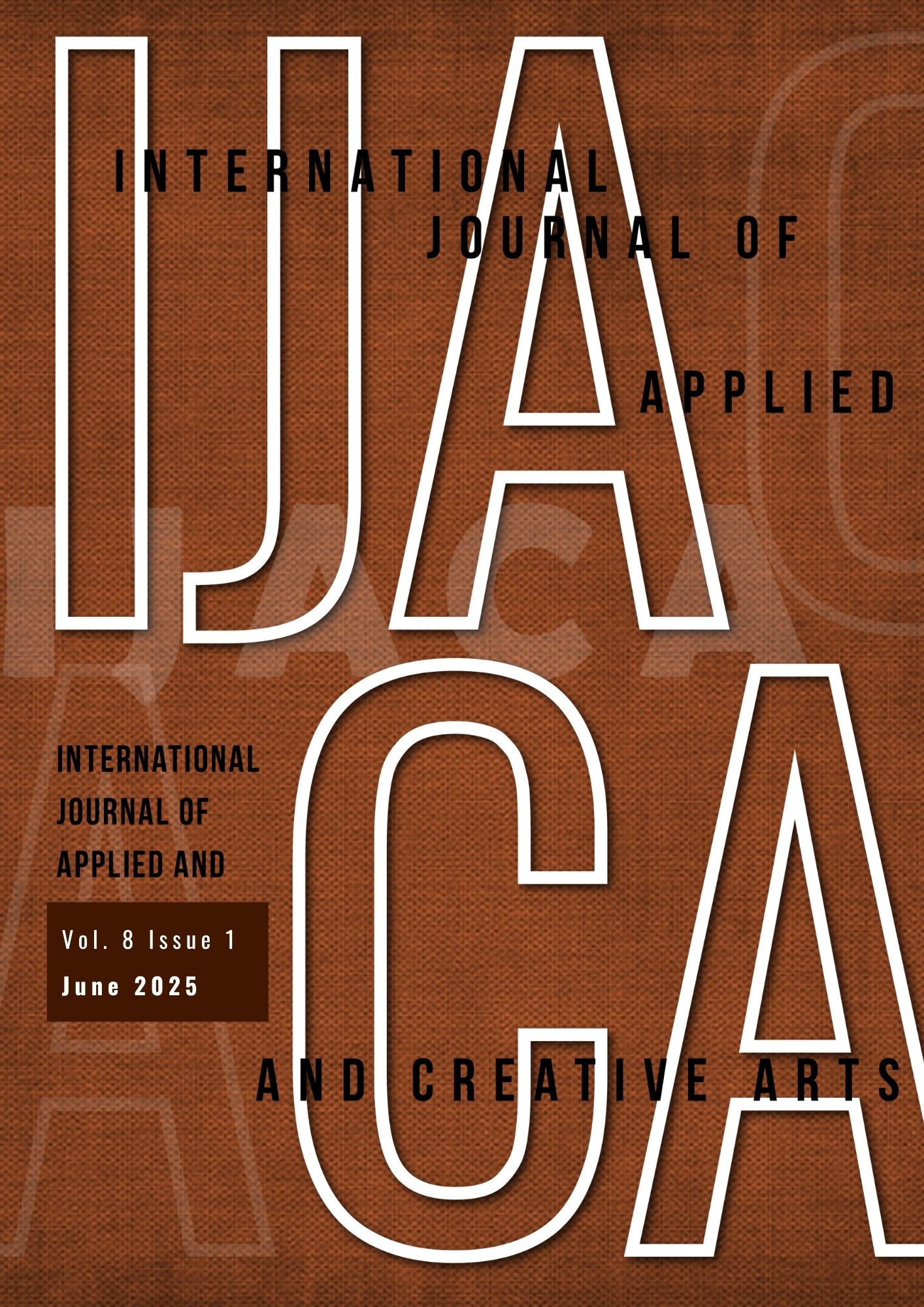Analysis Of Factors Influencing Success In College-Level Advertising Design Competitions: A Quantitative Study Of College Awards
DOI:
https://doi.org/10.33736/ijaca.7742.2025Keywords:
Advertising Creativity, Creative Approaches, Empirical Research, Quantity of Works, Visual Representation of DesignAbstract
This study examines patterns in award-winning graphic advertising designs to identify factors that increase students' chances of success in university competitions. The research specifically analyzes creative advertising approaches, visual representations, and submission strategies of gold-winning entries in the AD CAMPUS competition (2019–2023). Findings show that using metaphors, flat illustrations, and submitting three pieces as a cohesive series are the most effective strategies for winning. This study provides valuable insights for instructors guiding students in creative advertising competitions, offering a foundation for future design instruction and competition strategies.
References
Ding, H. Z. (2021) 72 Creative Changes. Henan University Press.
Ding,B. Q. (2024) Advertising Planning and Creativity. Higher Education Press.
James, W. Y. (2021) A Technique for Producing Ideas. Zhejiang Education Press.
Liu, S. & Qiu, B. (2019) Research on practical teaching of advertising competition. Drama House (21), 162+164.
Liu, X. W. (2019) The Truth of "Award" in advertising. Liaoning Fine Arts Publishing House.
Ni, H. X. (2016). Study on the modeling of Flat 2.0 style Illustration in Flat Advertisement. Modern Decoration (Theory), (10):124.
Pang, Y. (2017). Path Choice of Students' Creative Ability Cultivation in Academic Competition. Advertising Dazhan (Theory Edition), (06), 86-89.
Parker, B. (2000). Putting it all together: Effective participation in advertising competitions. Journal of Advertising Education, 4(1), 19-29.
Wang, J. (2020). Cultivation of innovative thinking in print advertising under the "Grand Canton Competition" -- A case study of School of Fine Arts and Design of Huizhou University. China National Exhibition (22), 185-187.
Xu, M. Q. (2024). Research on visual Rhetoric in Advertising design. Shanghai Packaging (03), 168-170.
Xiao, K. (2016) Discussion on the Integration of Advertising Competition and Practical Teaching of Advertising Specialty. Journal of Guangxi Economic Management Cadre College (02), 104-108.
Zhang, Q. (2020) Creative rules of works of grade award of "Academy Award" in "Daguang Competition". Young Reporter (14), 101-102.
Downloads
Published
How to Cite
Issue
Section
License
Copyright (c) 2025 UNIMAS Publisher

This work is licensed under a Creative Commons Attribution-NonCommercial-ShareAlike 4.0 International License.
Copyright Transfer Statement for Journal
1) In signing this statement, the author(s) grant UNIMAS Publisher an exclusive license to publish their original research papers. The author(s) also grant UNIMAS Publisher permission to reproduce, recreate, translate, extract or summarize, and to distribute and display in any forms, formats, and media. The author(s) can reuse their papers in their future printed work without first requiring permission from UNIMAS Publisher, provided that the author(s) acknowledge and reference publication in the Journal.
2) For open access articles, the author(s) agree that their articles published under UNIMAS Publisher are distributed under the terms of the CC-BY-NC-SA (Creative Commons Attribution-Non Commercial-Share Alike 4.0 International License) which permits unrestricted use, distribution, and reproduction in any medium, for non-commercial purposes, provided the original work of the author(s) is properly cited.
3) For subscription articles, the author(s) agree that UNIMAS Publisher holds copyright, or an exclusive license to publish. Readers or users may view, download, print, and copy the content, for academic purposes, subject to the following conditions of use: (a) any reuse of materials is subject to permission from UNIMAS Publisher; (b) archived materials may only be used for academic research; (c) archived materials may not be used for commercial purposes, which include but not limited to monetary compensation by means of sale, resale, license, transfer of copyright, loan, etc.; and (d) archived materials may not be re-published in any part, either in print or online.
4) The author(s) is/are responsible to ensure his or her or their submitted work is original and does not infringe any existing copyright, trademark, patent, statutory right, or propriety right of others. Corresponding author(s) has (have) obtained permission from all co-authors prior to submission to the journal. Upon submission of the manuscript, the author(s) agree that no similar work has been or will be submitted or published elsewhere in any language. If submitted manuscript includes materials from others, the authors have obtained the permission from the copyright owners.
5) In signing this statement, the author(s) declare(s) that the researches in which they have conducted are in compliance with the current laws of the respective country and UNIMAS Journal Publication Ethics Policy. Any experimentation or research involving human or the use of animal samples must obtain approval from Human or Animal Ethics Committee in their respective institutions. The author(s) agree and understand that UNIMAS Publisher is not responsible for any compensational claims or failure caused by the author(s) in fulfilling the above-mentioned requirements. The author(s) must accept the responsibility for releasing their materials upon request by Chief Editor or UNIMAS Publisher.
6) The author(s) should have participated sufficiently in the work and ensured the appropriateness of the content of the article. The author(s) should also agree that he or she has no commercial attachments (e.g. patent or license arrangement, equity interest, consultancies, etc.) that might pose any conflict of interest with the submitted manuscript. The author(s) also agree to make any relevant materials and data available upon request by the editor or UNIMAS Publisher.

